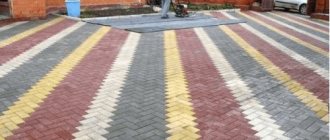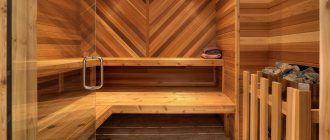Installing the entire electrical wiring of a house or apartment is an extremely responsible matter, requiring certain knowledge and experience in performing such work. Therefore, such large-scale events are most often entrusted to electrical specialists. But some problems that arise, for example, during cosmetic repairs or simply during the operation of electrical equipment, can be solved on your own. Such accessible operations include connecting stationary lighting fixtures, installing new or replacing faulty sockets and switches.
How to connect an outlet
In this publication we will focus our attention on sockets - they are the ones we deal with most often. The saturation of everyday life with useful electrical appliances is constantly growing, and new equipment often requires new connection points. In addition, any socket does not last forever, it is designed for a certain number of plug connections. And sooner or later it exhausts its resource, begins to spark, become loose, and sometimes completely crumbles into dust. And simply when carrying out cosmetic repairs, owners often want to replace all sockets and switches with new ones that best suit the style of the chosen finish.
So, he is considering the question of how to connect the outlet on his own, without calling a technician.
Types of sockets
The socket can have one socket (single) or two sockets (double). In terms of design features, sockets are divided into four main types. For each, there are different circuits for connecting with your own hands.
Let's look at them in more detail:
- Built-in. The socket box and wires are located inside the wall, in which a special hole is made.
- Invoices. They are installed on a specially placed shield that covers the wiring running along the wall.
- With screw clamp. The wire is laid inside the free space with two plates or wound around a screw clockwise. They are the most common and reliable.
- With key clip. To hide the wires, a spring terminal is used, which works by pressing a key.
Sockets can be with a closed and temporarily lifting socket for the plug, with grounding contacts on the body, with a button for ejecting the plug, with a built-in timer that programs on and off, for outdoors with protection marking IP55, for bathtubs with degree IP44.
To connect an outlet with grounding, you need to ask the electrician servicing the landing whether it is available in the electrical panel.
All sockets available in the world are divided according to shape, size and purpose. Europe has its own labeling standards, while North America has completely different ones.
Caliper location
The next question is how to correctly position the socket support inside the socket box - with the terminals down or up.
Some are guided by the inscriptions on the case. They should be legible and not upside down.
On the one hand, this is quite logical. But in reality, there is not much difference. This is not reflected in any way in the regulatory documents.
Therefore, mount it in the way that is convenient for you. For example, focus on the incoming cable.
Preparing to install the outlet
When connecting the wires to the outlet yourself, you must turn off the electricity that supplies the interior. It is worth turning off the power to all the wires in the house, and not just the one that belongs to the new outlet.
To make sure that the circuit is de-energized, you need to bring the voltage indicator to it.
- We remove the old socket if it is already in this place. Unscrew the lid, loosen the tabs, take out the working part and disconnect the wires.
- Before work, be sure to wear rubber gloves to protect yourself from electric shock.
- If the installation box is missing, you need to install a new one.
- The socket box should be brought back to normal condition, that is, cleaned of dust, paint and other debris that remains after construction work.
- This will prevent any possible problems that may arise during a future installation.
The problem of a clogged installation box is especially relevant in new buildings, after recent renovations. But even in old houses the condition of the socket box should be checked.
The purchased socket will need to be disassembled into two parts so that the wires can be connected to the inside. Unscrew the screws from the plastic cover using a screwdriver. We put the lid aside and leave the socket itself. To prevent the screws from getting lost, leave them in the holes of the cover.
Important Safety Tips
Installation work must be carried out during a complete power outage. To do this, turn off the circuit breakers or plugs in the distribution panel. It is strictly forbidden to turn them on until the work is completed, so family members should be warned about the repair.
First make sure the conductors are de-energized. This is possible using an indicator screwdriver. Working under voltage is prohibited!
What you need to pay attention to during installation:
- monitor the condition of cable insulation and do not use damaged ones;
- Do not cut live conductors with wire cutters;
- It is advisable to follow the recommendations for installing electrical outlets - no lower than 20 cm from the floor.
To work you will need a professional tool:
- indicator screwdriver;
- perforator;
- alabaster;
- Phillips and flat screwdrivers;
- pliers;
- stationery knife for stripping insulation;
- rubber gloves, safety glasses;
- the socket itself;
- conductors;
- socket box
The tool must have insulated handles.
Connecting electrical wires
We cut the electrical wires with pliers so that approximately 15 cm protrudes from the wall. If you leave too much length, the wiring will not fit in the socket box or there will be too little space for the socket.
- We clear the end of each wire from the insulation, leaving a bare cord approximately 1.5 cm long. For this work, you can use a regular knife, but it is advisable to take pliers or pliers specifically designed for removing insulation.
- We bend the wires so that they take the shape of the letter C or the letter G. For this action we use a universal working tool for working with wires, that is, pliers. We connect the wires to the working part.
- Each wire must fit into a specific connector in the outlet. Yellow or green insulation color means grounding, brown, white or red - phase, blue or black - neutral supply. Color markings when connecting wires may differ depending on the country of manufacture.
The grounding wire is connected to the central part of the outlet. The location where the neutral wire is connected depends on the brand of the outlet. In most cases, its location can be anywhere. The phase wire is inserted opposite the neutral one.
What is needed to switch the circuit?
Electrical wiring can be open or hidden. In this article we will consider the connection of sockets and switches made according to the second option, when all electrical switching is hidden under a layer of plaster. Hidden design is the most common type of electrical wiring; open wiring is usually used as a temporary option.
Preparing the walls
Before connecting a socket and switch in the room, you need to prepare holes in the wall for their installation and grooves in which the wires will be laid. There should be three holes in total - for the junction box and for the connected switching devices.
It’s better to draw an approximate drawing on a piece of paper in advance, where exactly you plan to connect the switch and socket, and what route the wires will take to these places.
The hole for the distribution box is made, as a rule, under the ceiling, 10-15 cm lower. Holes for switching devices are made at the site of their planned installation. It is better to install the socket at a distance of 30 cm from the clean floor, where household appliances will be connected to it. It is advisable to install the switch at the entrance to the room at the level of an adult’s lowered hand - about 90 cm from the clean floor. These works are performed with an electric drill with a special bit for brick or concrete, a hammer drill with a Pobedit drill, an impact drill or an angle grinder.
When installing gates, consider several important rules:
- They can only be horizontal or vertical; no tilting is allowed.
- The entire path of the groove from the distribution box to the installation sites of the socket and switch must pass with a minimum number of turns.
- Vertical grooves cannot be brought closer to window and door openings less than 10 cm, and to gas pipes - less than 40 cm.
To install the grooves, you can use a hammer and chisel, a hammer drill, a grinder or a special tool - a wall cutter.
When all the holes and grooves are ready, thoroughly clean them of dust using a vacuum cleaner.
Installation elements and tools
To perform the electrical part of the work you will need the following materials and tools:
- distribution (socket) box, in which all wires are connected;
- two plastic or polypropylene mounting boxes (socket boxes), they are needed in order to securely fasten the switching devices in the wall openings;
- indoor socket;
- indoor switch with one key;
- lighting fixture;
- set of screwdrivers (flat and Phillips);
- knife or stripper for removing insulation from conductors;
- pliers with insulated handles;
- clamps or insulating tape;
- indicator screwdriver.
To switch the entire electrical circuit, you will also need a two-core wire. Nowadays, electrical goods stores offer a huge assortment of wires and cables, so immediately buy one so that each core has its own colored insulation, for example, red and blue. This will make it easier to switch the circuit; you won’t have to look for phase and zero with instruments, you’ll just need to connect wires of the same color.
In order to fix the wires laid in the grooves, you will also need alabaster and a spatula.
Installing an outlet (step by step instructions)
We insert the working part into the socket box. We fix the ends of the wires with screws and bend them so that they fit in the socket box. Before you insert the socket into the hole, you need to make sure that it will fit there.
Until the socket is adjusted sufficiently evenly, you should not secure it with screws.
- In order to adjust the position of the socket, you need to use a laser level. Using this tool, we make sure that the upper border coincides with the horizon line. After this, we finally secure it with screws. You can also use a spirit level, but the installation process will be more difficult.
- Place the decorative frame and secure the socket cover with a screwdriver. This work will not require any effort and will take about two minutes of time. Don't screw it too tightly because there is a risk of breaking it. The lid should fit tightly to the surface.
We supply power to the installed outlet. It is necessary to test the voltage level occurring between the phase and the ground wire, as well as between the phase power supply and the neutral. We connect a device that runs on electricity to the new outlet and check whether power is supplied from the outlet.
Preparatory work
Planning is an important matter before the actual installation of electrical wiring and installation of sockets.
It is necessary to take this seriously so that in the future a number of difficulties do not arise in the operation of electrical appliances, when something is missing in one place, and in another it experiences increased load. At the planning and preparatory stage you need to:
- Determine the location of sockets and connected devices;
- Draw a wiring diagram;
- Separately, for each room, calculate the required number of wires, sockets, switches involved in the installation process;
- Prepare the necessary tools, self-tapping screws, screws, screws, dowels;
- Hollow out a niche for the socket box and grooves for laying the cable.
During the work you will need the following equipment:
- A hammer drill with a diamond crown for preparing a niche for a socket box;
- Screwdrivers with different blade configurations (flat and Phillips);
- Pliers with wire cutters;
- Wire with a cross section of 2.5 mm;
- Sharp knife for stripping wires;
- Socket box;
- Plaster mixture, gypsum or cement mortar;
- Socket of the required model and configuration.
Methods for installing sockets are available for viewing in numerous photos and drawings. They are simple and will not cause any difficulties even for a novice electrician:
- Installation directly into the wall in a pre-installed socket box;
- Overlay on a protected surface without digging into a niche (dielectric fire-resistant plates are used to secure the socket core to them).
A recess is first made for the socket box, in which it is placed with the wires installed on a cement or gypsum mortar.
We use a hammer drill with the necessary attachments and protect the respiratory system from dust.
After the construction mixture has dried and the glass of the socket box is held securely, we proceed to the direct connection and installation of the socket.
Additional installation features
In buildings with an older electrical system, the grounding conductor is not built into the layout of the house. Therefore, in old houses there are no specially designated places for the phase and neutral wires.
In new buildings, grounding works, so you need to have a clear idea of what markings should be on the wires for connection to a particular terminal.
- When cleaning wires from the insulating coating, it is advisable to use a special tool that allows you to do this smoothly, safely and without unnecessary damage.
- The insulation is peeled off from multi-core wires in a circle, from single-core wires they are ground off, acting as carefully as possible so as not to damage the wire.
If you connect the sockets correctly step by step, it will not pose any problems. When working with electrical equipment, you must be especially careful and follow safety regulations.
How to choose the right method
It all depends on the amount you can afford to spend, the power of the device that will be connected to this outlet, as well as the presence or absence of decoration on the walls (the desire and ability to ruin it).
In any case, the most reliable way to connect any outlet is a separate (parallel) connection directly to the main panel or distribution box in the room (if the cable cross-section allows). If the outlet is planned only for connecting a TV or similar not very powerful devices, then a daisy chain connection is also quite suitable.
If you plan to install wiring in a new house or modernize (replace) an old one in an apartment, then first of all you need to, without undue modesty, imagine what electrical appliances you would like to have - what can be connected to the network in principle. Based on this, it is already possible to calculate the required cross-section of wires and the method of connecting them.
Photos of the best sockets for apartments and houses
Share with friends











